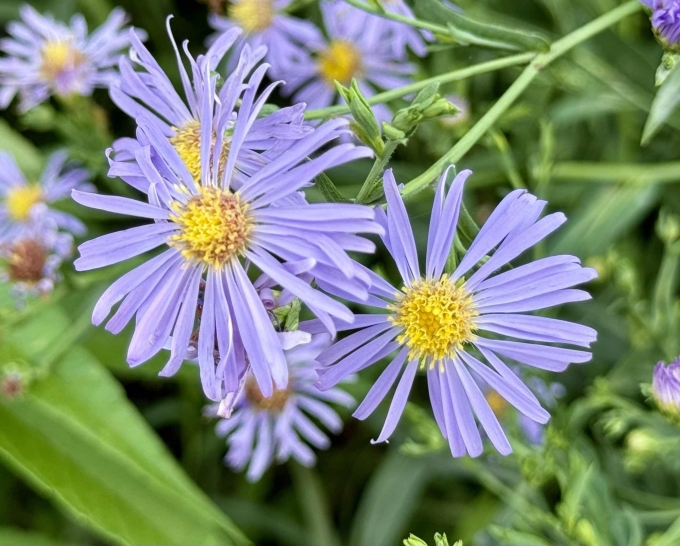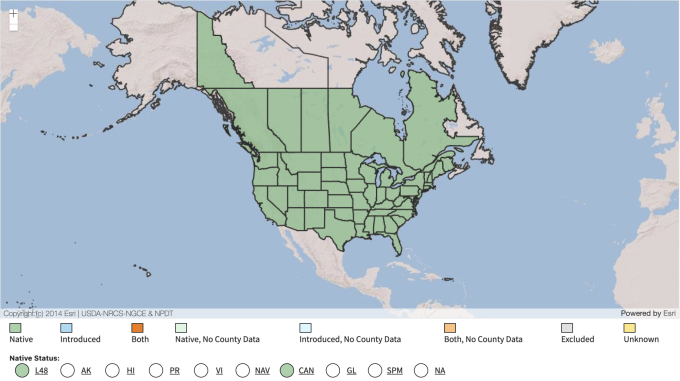Common Name: Smooth Blue Aster
Family: Asteraceae
Plant Type: Herbaceous Perennial
Native Range: Central and eastern North America, including Nebraska
Hardiness Zones: 3–8
Height: 2.0–4.0 feet
Spread: 1.5–2.5 feet
Bloom Time: Late summer to fall (September–October in Nebraska)
Bloom Description: Abundant daisy-like flowers with lavender-blue petals and yellow centers, held on upright, branching stems
Sun Exposure: Full sun to light shade
Water Needs: Low to medium
Soil Preference: Well-drained soils; tolerates clay, loam, sandy, or rocky soils
Management Level: Low
Suggested Use: Prairie plantings, pollinator gardens, borders, naturalized areas
Attracts: Bees, butterflies (including Monarchs), and other pollinators
Tolerates: Drought, poor soils, deer, clay
Notable Features: Smooth, bluish-green stems and foliage, profuse late-season bloom, excellent pollinator plant
Nebraska Growing Notes:
Smooth Blue Aster is a native, hardy, and showy late-season perennial, thriving in Nebraska prairies, roadsides, and gardens. It performs best in full sun and well-drained soils, but tolerates light shade and clay soils well.
This species provides essential nectar and pollen in fall when many other plants have finished blooming, making it critical for late-season pollinators and migrating Monarchs.
Its sturdy, upright habit and attractive blue-green foliage make it a standout in both formal and informal settings. Plants may lean slightly if grown in overly rich or shady areas, interplanting with grasses can help support stems.
Landscape Use:
Excellent for prairie-style plantings, wildflower meadows, pollinator gardens, naturalized areas, and borders. Pairs beautifully with Solidago (goldenrod), Rudbeckia, Liatris, and native grasses for a dynamic fall display.
Caution:
Non-toxic and wildlife-friendly. Can spread slowly by seed and rhizomes, easily managed in garden settings. Avoid excessive fertilization to keep plants from becoming floppy.


